Growing a garden and canning your own food used to be commonplace. Although plowing was the duty of the man of the household, every woman knew how to plant and take care of the garden or field, as well as gather the vegetables and fruit that they produced.
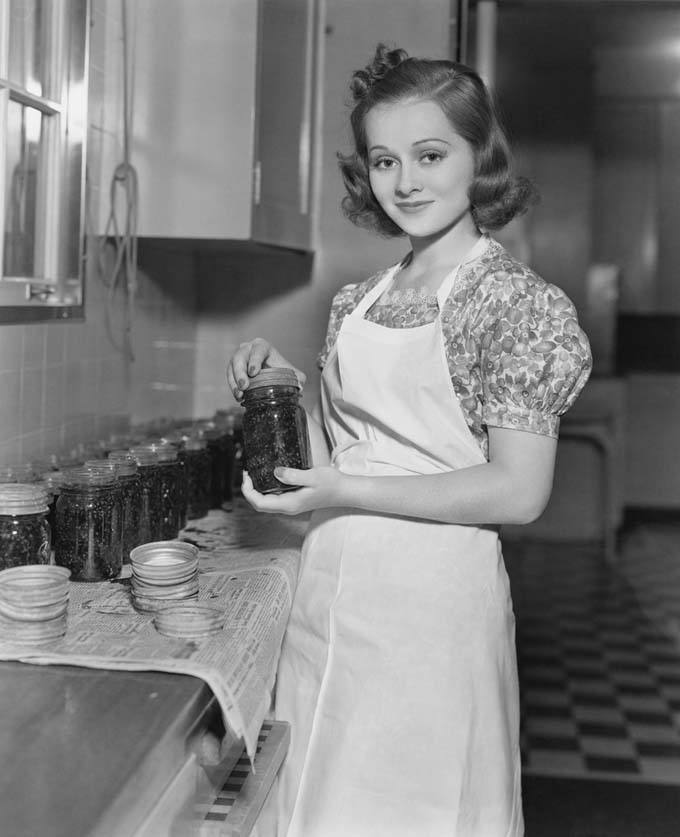
At her side were her children, who were taught the value of hard work and how to be self-sufficient from a young age.
When I was a child, my grandfather had a mule and a wooden plow. He would start at daylight, hitch up the mule, and plow the rows and rows of vegetables that he had planted.
Around lunchtime, he would stop and go to the house to eat a meal that my grandmother would have hot and ready for him. Afterward, he would take a quart jar of water and go back to the field.
Everything we ate was a product of our own planting, tending, and harvesting. I learned how to do all of these things by following my grandparents. They were hard workers, and always had enough yield from their garden to share with neighbors, as well as put up plenty for the family for the winter.
The dirt in their field was dark and fertile from years of tender care, adding fertilizer and compost to enrich the soil. The result was a plentiful harvest.
We would gather corn, beans of different varieties, tomatoes, cucumbers, squash, and okra by the bucket!
I loved this, even though it was hard work in the hot sun. It meant I would be doing two of my favorite things: spending time outside, and working with my grandparents.
After gathering the food, Grandma would set about the task of preparing it for “putting up.” It was a lot of work, but it was pleasantly done side by side with Grandma.
The corn had to be shucked, silked, washed, and cut off the cob. Tomatoes had to be peeled and quartered. Green beans were usually taken out on the porch, as this was a more time consuming job, and one that could be done while sitting down.
After we had removed the strings and the beans were broken into pieces about 1 to 1 ½ inches long, they were taken in the house and carefully washed.
Butterbeans also were usually shelled on the porch. Other vegetables were peeled and cut up as they were harvested and prepared for canning.
After the food had been prepared, we would fill the pressure canner with 3 to 4 inches of water and turn the stove on high.
While the water was heating, we would wash glass quart jars and flat lids with metal rings that would go on the jars after they were filled. The jars were put into the boiling water upside down on a metal rack to be sterilized for 10 minutes.
Then we would take the hot jars out of the water and carefully pack whatever vegetable we happened to be working on at the time into the jars. They were packed to about an inch below the top, and then we added 1 teaspoon of salt, and poured in boiling water to just barely cover the contents.
Water was not added to tomatoes or corn. Their natural juice was sufficient to fill the spaces in the jars. Then the sterilized lids were put on the jars and tightened.
When seven jars were ready they were placed into the canner, which needed to have about two inches of water in the bottom. The lid was put on and the arrows to seal it were lined up, insuring that the steam would not escape anywhere that it shouldn’t.
As the canner became hotter and pressure began to build up, the steam would begin to spew from a small hole in the top of the lid. This, according to the design of the canner, was the way that we would know when to begin timing and monitoring the pressure. The timer was set for 10 minutes once the steam began to escape freely.
Each canner came with a book of recipes and a list of foods that may be canned, along with specific instructions and tips. Depending on what we were canning, the pressure gauge was set at the correct number of pounds of pressure. And when that number was reached, the timer was set for the correct amount of processing time (which varied, depending on whether we were filling pints or quarts).
The gauge would jiggle and we would watch to make sure excess pressure did not build up. If the gauge showed more than the correct amount of pressure, we would turn the heat down slightly on the stove.
It was a carefully monitored process, and could be dangerous if not done properly.
When the appropriate amount of time had gone by, the stove would be turned off and the canner was left to cool on its own. It usually took several hours for the canner to cool sufficiently for the lid to be removed.
Often when we had a lot to can in the same day, there would be two canners processing at the same time. Click here to learn more about the same style of pressure canners that Grandma used.
When the cookers were cool and the lids removed, we would take the still-warm jars out and place them on a clean towel on the kitchen table or counter. We would write the date of processing on each lid, and when they were cool, they were placed on shelves in Grandma’s pantry.
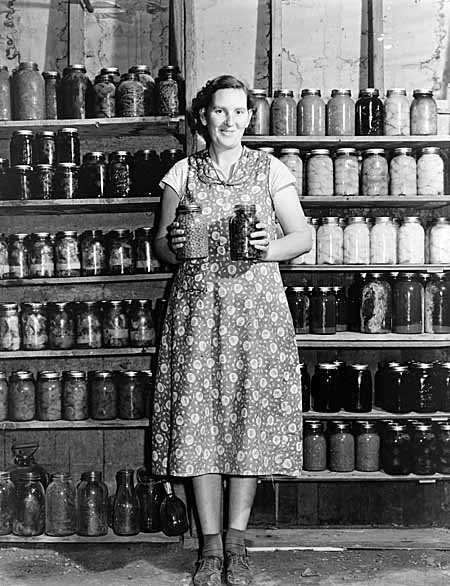
It was a good feeling to see the shelves lined with jars of food, and to know that our family and friends who might share a meal with us would enjoy this.
In addition to canning vegetables, there were fruit trees, berry vines, and bushes around where we lived, and we also gathered their fruit to can and preserve. The peaches, pears, and apples were peeled and quartered, and the seeds were removed. Berries were washed and sorted to remove any that might have a spot on them.
The fruit was packed into hot sterilized jars, and sugar was added according to the instructions in the canning book.
For the raw packed fruit, boiling water was added to cover the fruit and sugar, and the lids were put on. Usually the hot jars and hot water would make the jars seal.
If not, Grandma would heat the canner, place the jars inside, and close the lid. Then she would turn the stove off. This was not to process the jars – only to allow them to sit in the hot water and seal. This process is known as water bath canning.
We usually made a lot of jelly and preserves as well. Grandma would buy several boxes of fruit pectin. This is the agent which, when added to the fruit during the cooking process, makes the jelly and preserves reach and maintain the correct consistency.
Directions are enclosed inside each box of fruit pectin, listed by the type of fruit. Cooking times for each and the amount of sugar to be added are included, along with step-by-step instructions.
After the mixture was cooked for the correct amount of time, we poured it into sterilized jars (usually pints) and put the lids on. These jars were put on a clean towel with another thick towel over them, so that they were completely covered to help them seal.
The sound of the lids popping would tell us that our work was done. If there was a jar that didn’t seal, Grandma would put it in the refrigerator and sometimes it would seal in there. If not, we would have the contents of that jar to enjoy right away.
Nothing was wasted. Everything that could be used was canned and made ready for the winter months, when there would be no garden. The peelings and scraps were fed to the chickens. We worked hard, and were thankful to be able to enjoy the results of what we were blessed with.
Did this post conjure up some memories, or maybe some kitchen inspiration? Tell us about your own adventures in canning in the comments!
About Lynne Jaques
Lynne is a stay-at-home mother of two boys. As a former US military officer and the spouse of an active duty US military member, Lynne enjoys traveling the world (although not the moving part!) and finding new cuisine and methods of preparing food. She also has the habit of using parenthesis way too much!

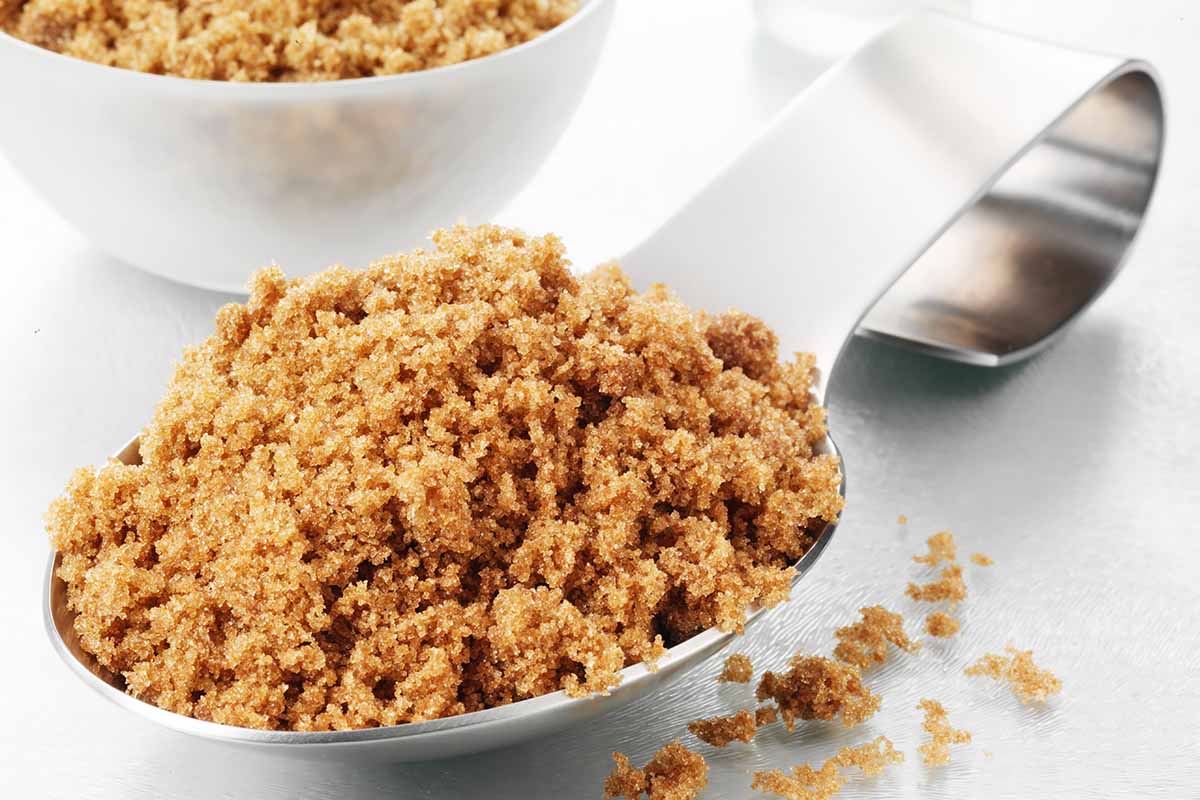
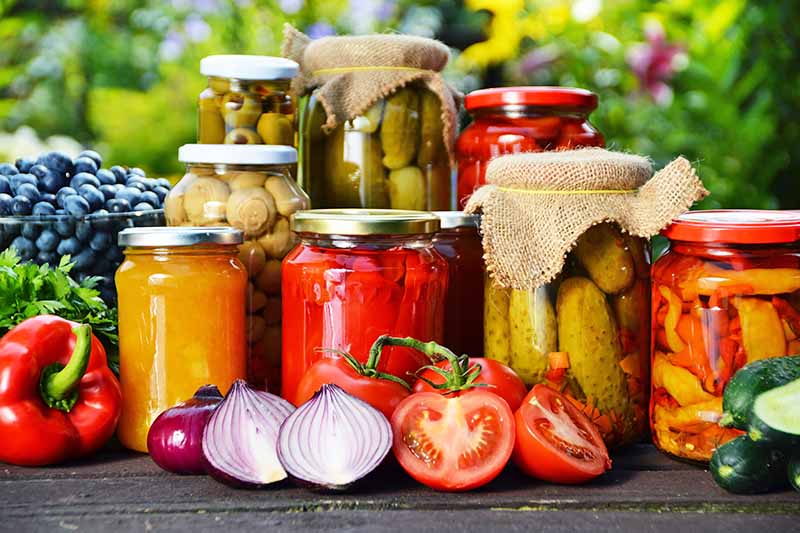
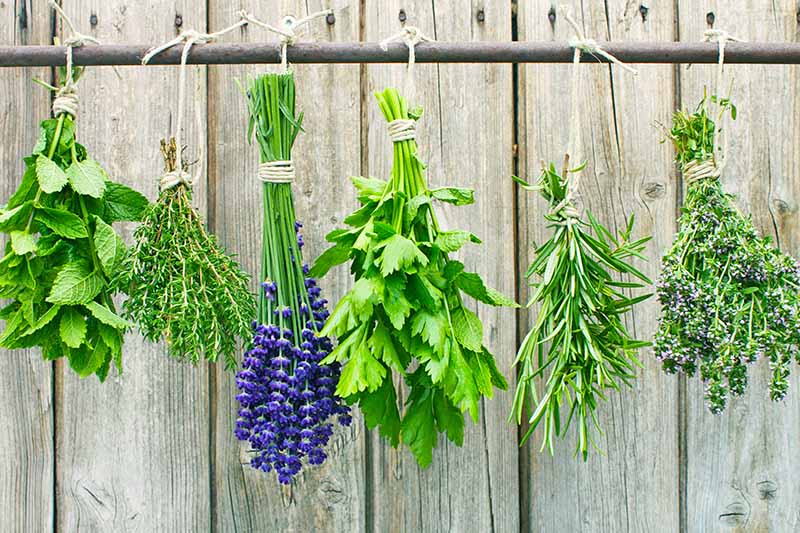
That was an absolutely beautiful post, Lynn. No one in my family ever canned, and after reading your memories of your grandparents I feel a loss in not experiencing something similar.
My own foray into canning was short-lived. I made pineapple jelly once and half of them didn’t set properly, so we ended up using those ones as an ice cream topping. Definitely delicious, but I counted it as a fail. Next I tried cowboy candy (candied jalapenos). That was definitely a rousing success, but I liked them so much I ate nearly all 8 pints by myself over the course of a few months. Let me tell you something. A Triscuit with a dollop of cream cheese and a drippy mound of candied jalapenos is one of the finest creations on this planet!
Thank you so much for sharing your lovely memories of canning and gardening with your grandparents. I think I might just be inspired enough to dust off my canning supplies and give it all another whirl.
I loved reading your post as it brought back so many pleasant memories of canning with my own grandmother. Her favorite things to “put up” were hot peppers and grape jam. We would spend hours working in the hot kitchen but in the end when we would see that glorious stockpile of jars filled with good, real, delicious food it was well worth it. It has been quite a while since I have canned anything but I think it’s time. I would like to continue the tradition with my daughter in hopes that she’ll do the same.
Thank you for sharing and bringing back some great memories!
This was a lovely post. Not only informative but very beautifully written. It was very nice reading about your experiences and memories with your grandmother. Thanks for sharing.
This is the first year our garden has been so bountiful that I considered canning. I haven’t gotten around to it and took the easy way out by freezing a lot of things, but maybe I’ll save them while they’re still fresh and take some tips to can!
This is a really great post! We are still collecting our canning supplies after determining that this would be a great way for us to enjoy healthy foods year round. I am still apprehensive about canning but I am a mean dehydrator!
This post makes me remember helping my own grandparents when they did their canning. Growing up I always thought that it was normal to do this. I was wrong. My first job was in a grocery store and my co-workers didn’t know what the glass jars were for. One guy just thought they were large drinking glasses.
I don’t have a garden right now where I live, but when I move somewhere I can grow a garden I will be canning. I did it for years with my grandparents and it was always interesting for me to help out and see what they would have for the winter. It was amazing at how much food there was to store.
Great post!
This is a lovely heartwarming post. Indeed, cooking is more than just bringing food on the plate. It ignites memories of those we care about. Thank you for sharing with us some family traditions. This is useful for gardeners who want to preserve food.
In my family, we often share our canned fruit with friends. Sometimes there’s just plenty to go around. It’s a nice feeling to be able to grow, to store and to enjoy our own harvest.
Your grandparents were grateful for everything they had, and they made sure not to let anything spoil. They sound like very inspiring people.
Growing up in the south canned was just part of life. This was done every summer by my mama as well as many aunts. Every house I went to the kitchen was sorted with mason jars, strainers and of course a pressure cooker.
It’s not so these days, but when I look make as a child that is one of those things I truly miss. It taste way better then store bought too.
I really think that people should think about doing a lot more of this sort of thing nowadays. I’m actually working on setting up a garden right now and this way I can make sure all the things that I grow can be saved for later use! 🙂
I’m thinking that I’m gonna make a lot of jam eventually 😉
My parents don’t can anymore but they use to. My mom does still make pickles though. I use to love helping and watching. I never seem to retain the information though, I would need help with my first garden though for 10 years I watched and worked by my parents as they did it. Farming runs in our family so it is great to know that is for sure.
Preserving food by yourself is perfectly fine and fun in my opinion. I certainly beats the canned or preserved commercial kind when it comes to being healthy. You wont ever need artificial preservatives in your batch, and some in some preserves, you can even customize to your own tastes. That’s a win-win situation right there.
This article reminds me of my childhood! My Grandmother was always making preserves! I remember once a year I would get together with my mother and grandmother to make a big batch of mustard pickles. I can still remember how cutting the onions was the worst part, but it was worth the tears. I am trying to get into making preserves myself, I am a student, so I am on a tight budget. However, I love food FAR too much to resort to eating Kraft dinner or noodles for every meal! My mother is constantly telling me how I will save money if I would just stop procrastinating and make some mustard pickles of my own haha.
Thank you for this post! I’m excited to see that people are still using older methods of canning and preserving food. Although this is more of a story, it was very informative of different methods and remembering simpler things.
This was my childhood too. Both sets of grandparents canned their food and some of my fondest memories were helping my grandparents shell beans, shuck corn, tend to the garden, roll out dough for biscuits and pies. There was a lot of work to do back then, but I got the best gifts ever….spending time with my grandparents while learning valuable skills.
This was an absolutely lovely post, I could actually picture myself doing the whole process, unforgettable! I never knew my grandma, but my grandpa also used to plant most of his food in the little garden that he used to have on the backyard, even if he didn’t really liked to be helped while he was doing this process, I still can remember all the time that he used to spend on it, and as you’ve said, at the end of the day, it’s absolutely worth it.
Sometimes I wish that life was like before in some aspects, and this is definitely one of them.
Thank you so much for sharing.